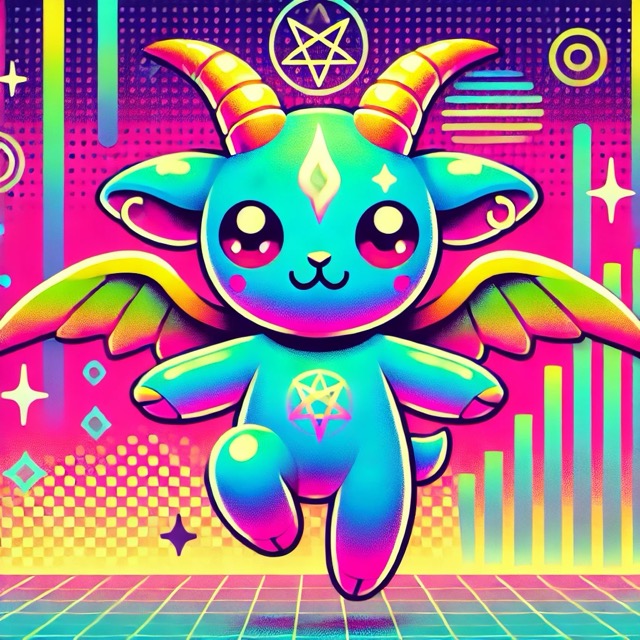After School with Satan: What It Really Teaches Our Kids

Not many after-school programs turn heads like The Satanic Temple’s After School Satan Club (ASSC). Sure, the name might sound wild at first, but dig a little deeper, and you’ll find a program that’s all about encouraging curiosity, free thinking, and understanding yourself in ways most schools wouldn’t even touch.
Let’s dive into what this program is really about and what it actually teaches kids.

⚛️ What is the After School Satan Club?
The After School Satan Club (ASSC), run by The Satanic Temple (TST), is shaking up after-school programs in the best way. Instead of following the typical religious route, the ASSC focuses on science, creativity, and free thinking—no preaching, no dogma, just open-minded exploration. It’s designed to give kids a space to ask questions and explore the world without being told what to believe.
Here’s the twist: for TST, Satan isn’t some evil deity. He’s more like a literary symbol—think rebellion against tyranny, both in the world and in your own head. The club uses that energy to inspire kids to think critically and stand up for themselves. Through activities like games, art projects, and science experiments, the ASSC helps kids build confidence, spark curiosity, and grow emotionally and intellectually.
It’s not about teaching kids to rebel—it’s about teaching them to think, question, and grow into the best versions of themselves.
👹 Who Are Satan and Baphomet in The Satanic Temple?
For The Satanic Temple (TST), Satan and Baphomet aren’t literal beings—they’re symbols that stand for powerful ideas like freedom, balance, and individuality. These figures help TST challenge oppressive systems and promote open-mindedness.
Satan, as TST sees it, is a metaphor inspired by literature like John Milton’s Paradise Lost. In the story, Satan represents rebellion and standing up against tyranny. TST uses this version of Satan to symbolize questioning authority, thinking for yourself, and pushing back against unfair systems—not as a symbol of chaos or evil, but as a reminder to pursue personal growth and independence without fear.
Baphomet, on the other hand, is all about balance and harmony. This goat-headed figure, designed in the 19th century by occultist Éliphas Lévi, represents duality: light and dark, masculine and feminine, spiritual and material. The flame between Baphomet’s horns stands for enlightenment and knowledge. For TST, Baphomet is a reminder to embrace complexity, find balance, and break free from rigid labels.
It’s important to note that TST doesn’t worship Satan, Baphomet, or any supernatural beings. These figures are used purely as symbols to spark critical thinking, self-awareness, and the fight for justice. By reinterpreting these misunderstood archetypes, TST encourages people to question societal norms and explore new ways of thinking.
In short, Satan and Baphomet aren’t meant to be scary—they’re tools to help us reflect, grow, and stand up for our values in a world that often resists change.
🧠 Tarot, Jungian Psychology, and the Devil in Our Psyche
In the Devil card of the tarot, this archetype takes on a deeper psychological dimension. The card often symbolizes being bound to material or mental limitations—addictions, fears, and attachments. However, the chains that bind the figures in the card are loose, suggesting that freedom is always a choice. It encourages self-awareness and the courage to break free from limiting beliefs.
From a Jungian perspective, the Devil archetype resides in the shadow self, the part of the psyche that contains repressed desires, fears, and untapped potential. Carl Jung believed that confronting the shadow was essential for personal growth and individuation—the process of becoming one’s truest self.
The Devil, then, is not something to be feared but an opportunity to face parts of ourselves we’d rather ignore. By doing so, we integrate these aspects into our conscious life, fostering wholeness. The Satanic Temple, by embracing Satan as a metaphor, challenges individuals to engage with these shadows, encouraging autonomy, personal responsibility, and intellectual freedom.

💒 Religious Freedom Hits Different Today
Religious freedom in the U.S. was built on the idea that everyone has the right to believe—or not believe—whatever feels true to them. But let’s be real: most traditional religions still center on patriarchal values, leaving little room for alternative perspectives. That’s where The Satanic Temple (TST) flips the script. By using Satan as a symbol of free thought and self-determination, TST challenges the old-school definitions of spirituality and makes space for something refreshingly different.
The After School Satan Club (ASSC) is a perfect example of this shift. It’s a reminder that religious freedom isn’t just about faith—it’s also about the freedom to think critically and not subscribe to any religion. Teaching kids to embrace this kind of diversity helps them grow into empathetic, open-minded humans who can thrive in today’s interconnected world. Because at the end of the day, respecting different beliefs (or the lack of them) benefits everyone.
🧑🏼🏫 Why Teach Kids About Satan and Its Symbolism?
For children, learning about symbols like Satan can offer unique insights into themselves and the world. It can teach them:
🤔 Critical Thinking: Exploring Satan as a metaphor fosters questioning and analysis rather than passive acceptance of ideas.
🪞 Self-Reflection: Understanding the Devil’s tarot archetype or Jungian shadow work encourages children to examine their fears and desires constructively.
🌈 Empathy for Others: Exposure to diverse beliefs promotes open-mindedness and reduces stigma toward those who think differently.
The After School Satan Club accomplishes this through science-based activities, creative expression, and discussions that highlight individuality, freedom, and personal accountability.
😈 Why the Satanic Temple Is Not Something to Fear
The Satanic Temple is not about promoting evil or worshipping Satan as a literal entity. Instead, it uses the symbol of Satan to challenge oppressive systems and encourage intellectual freedom. Their after-school programs are staffed by vetted, trained educators and operate with transparency. They emphasize fun, learning, and respect for all viewpoints.
In a world where children are often taught what to think, the ASSC teaches them how to think, making it a valuable addition to the modern educational landscape.
Conclusion: The Gift of Curiosity
The After School Satan Club may challenge traditional perceptions, but it offers something universal: the gift of curiosity and the courage to explore. Whether through learning about Baphomet’s balance, the Devil card’s wisdom, or Jungian shadow work, children gain tools to better understand themselves and the world. Programs like the ASSC remind us that true freedom—spiritual, intellectual, and emotional—comes from embracing diversity and questioning the status quo.
What do you think about the After School Satan Club? Does exploring symbolism and promoting free thought in this way challenge societal norms in a good way, or does the name still feel like a step too far? Share your thoughts in the comments—we’d love to hear your perspective!





Responses